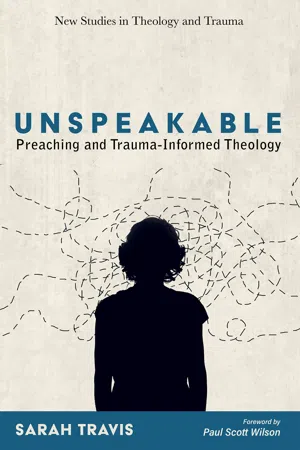![]()
1
Defining Trauma and Its Effects
Fireworks are a popular and fun way to publicly celebrate the New Year, the birthday of a nation, even a holiday weekend. In my neighborhood, I am accustomed to hearing the familiar bang-bang of these beautiful lights. For some, these events are among the most exciting times of the year. For others, they can trigger traumatic responses. Refugees from war-torn countries and veterans may find fireworks to be a startling assault that takes them back to undesirable places in their memories, and they may hear shootings or bombs rather than the sounds of celebration. As one Syrian child who is a refugee to Canada noted, “The fireworks sound like bombs . . . It makes my head hurt and I feel scared.” Such is life after a traumatic event. One of the things trauma does is make people more sensitive to threat. Life becomes unsafe, as trauma creeps into the present and refuses to stay in the past.
This chapter attempts to define trauma, encompassing many of the ways that trauma finds its way into the body of the church. The term trauma means different things to different people, and my intent here is to define it as broadly as possible to include a full range of experiences and emotions. Some of what I write here is equally applicable to people who are mired in grief rather than what might be traditionally considered trauma. The descriptions of trauma offered below are necessarily brief, and where possible I have provided bibliographical references so that preachers can search deeper into the concepts presented.
There are obviously degrees of traumatic experience. Sometimes traumatic events are healed with relative ease; some are profound and have significant consequences for the long-term well-being of individuals and their communities. I am operating on the assumption that no one escapes traumatic violence—whether it lives in the soul, on the doorstep, or on one’s neighbor’s doorstep, we live in a world in which traumatic violence affects everyone. The following discussion considers definitions and effects of trauma, particularly in relation to the ways that they matter for the task of preaching. I consider the issues of which preachers need to be aware so that they may model open, compassionate, courageous, and curious leadership that can respond adequately to the presence of trauma.
Always in preaching, it is essential to think about who is listening—who are the co-interpreters of gospel? On any given Sunday morning, we preach among a multitude of others, including those who bear trauma in their bodies and souls. Some of this trauma is firsthand, driven by experiences of illness, abuse, or personal violence. Other trauma is brought on by witnessing the experiences of others. Primary traumatization affects those who witness a traumatic event or have a traumatic response to a direct personal experience. Secondary traumatization impacts those who are traumatized by the traumatic experience of someone else. This is also referred to as indirect trauma and might be experienced by therapists or caregivers who have listened to the stories and experiences of trauma described by their patients or those in their care. In some cases, we as preachers are well aware of the traumatic experiences of listeners. Our parishioners may have told us about their experiences of trauma, or we might have knowledge of the events that have shaped their lives. Sometimes, trauma is hidden in the deep recesses of the pews and we have no idea what is going on beneath the surface. Any time we climb into the pulpit, there will be listeners who are interpreting the gospel through the lens of their own traumatic experience.
Serene Jones tells the story of her young friend Leah, whom she is sponsoring for baptism. In the midst of a communion service, Leah is overcome with terror and flees the sanctuary. As Jones comes to realize the potential effects of the liturgical emphasis on body and blood, she begins to wonder about the traumatic experiences of others in the sanctuary. How could grace reach someone like Leah, who suffers from Post-Traumatic Stress Disorder (PTSD)? How can “liturgy, community, and faith together work best to encourage healing in broken places?” Jones becomes aware of the presence of others affected by trauma: war veterans, a mother whose son died from drunk driving, a young girl who witnessed a drive-by shooting, a man from Rwanda, and possibly others whose trauma is hidden. Suddenly, the safe space of the sanctuary did not seem safe or orderly:
The words, symbols, and practices of the Christian faith are loaded with traumatic imagery. Since trauma is present in our ...
